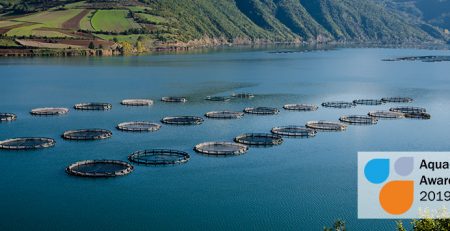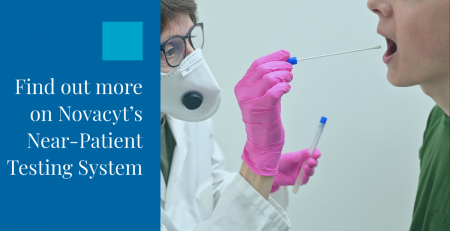The costs and healthcare challenges of tackling COVID-19 have threatened the world’s ability to address a steady rise in other serious infectious diseases.
That’s the conclusion of a panel of experts bought together for the latest NovaTalk, hosted by international clinical diagnostics company Novacyt and entitled ‘Overwhelmed by COVID-19, are other serious infectious diseases neglected?
In a debate on July 7th, chaired by medical journalist Sue Saville, former Medical Correspondent for the UK’s ITV News, the discussion was wide-ranging and included:
- Dangerous co-infections have emerged in seriously ill COVID-19 patients, particularly invasive fungal diseases among hospitalised patients on oxygen or a ventilator.
- Continuing global surveillance is key to track down new viruses at source in order to develop new diagnostics tests and vaccines at speed.
- Climate change and global warming means a western migration of diseases, traditionally associated with hot or underdeveloped countries. Rising temperatures in ‘colder’ countries are attracting insects that carry risky pathogens, and fungal conditions thrive in warmer environments.
- A growing, aging global population and increasing resistance to anti-biotics means a greater risk of infection spread – particularly as there’s little scientific advance in developing the next generation of anti-biotic medicines.
- There needs to be a ‘global village’ approach to tracking, diagnosing, treating and controlling future deadly viruses; individual countries should not retreat behind their own borders and take a parochial view.
- To address any future virus beyond SARS-CoV-2, the cause of COVID-19, we need to be prepared with testing kits for co-infections and future infections – grasping the potential of new diagnostic technologies and multi-plex testing panels to deliver testing to point-of-care – particularly in developing countries.
Discussing the rise in co-infections in COVID-19 patients, Dr Lewis White, consultant clinical scientist specialising in invasive fungal disease, said he had anticipated that COVID-19 would trigger an increase in fungal infections, and that had taken place. Dr White has been a Principal Clinical Scientist in Public Health Wales Microbiology, Cardiff, for over 15 years and is head of the UK Clinical Mycology Network Regional Mycology reference lab, responsible for the implementation of diagnostic driven approaches for the management of invasive fungal disease (IFD), reducing both the incidence of disease and conversely, the use of unnecessary antifungal therapy. He is a fellow of the European Confederation of Medical Mycology (ECMM) and a fellow of the Royal College of Pathologists.
“One of the issues has been convincing healthcare professionals that other infections besides COVID-19 should be considered when they’re treating a seriously ill patient with COVID-like symptoms. For instance, if the patient is HIV positive, that infection with COVID symptoms could be PCP. Other viral infections are often forgotten in a pandemic,” he said.
Everyday challenge
Dr Lewis explained that the world had about two million species of fungus, and 500-600 of them had caused documented diseases in humans. For patients with allergies and underlying respiratory disease, there were more than 10 million cases of fungal infection cases p.a., with the biggest risk to immunocompromised patients such as those fighting COVID-19. There had been increasing incidence of dangerous co-infections, such as the airborne ‘black fungus’ mucormycosis, particularly in India; white fungus Candida auris, and Aspergillosis, creating an epidemic within a pandemic.
Exposure to fungi is inevitable, he said, as we breathe in spores every day, so the risk of fungal disease is difficult to avoid – therefore swift detection, diagnosis and clinical interventions are key.
Another panellist was Dr Peter Donnelly, Editor in Chief of Antimicrobial Journal in Chemotherapy and a leading global microbiologist based in the Department of Haematology of the Radboud University, Nijmegen Medical Centre, in The Netherlands. His main interests are the management and diagnosis of infectious complications in haematological malignancies and stem cell transplantation, and he has extensive experience in the design, conduct, analysis and reporting of clinical trials. He said one of the key issues behind successfully treating patients with invasive fungal disease or other infections was an increasing resistance to antibiotics.
“In the Netherlands, we were one of the first countries to note that Aspergillus was becoming increasingly resistant to the drugs we use to treat it,” he said, explaining that a key factor behind antimicrobial resistance was the use of anti-fungal sprays in agriculture, to protect food as it’s transported around the world to consumers. As people eat these sprayed foods, they’re consuming anti-biotics, and building up resistance to them, even if they’ve never been treated with them in healthcare.
Dr Matthew Dryden, consultant specialising in microbiology and infectious diseases, said it was important to have anti-microbial stewardship, using biomarkers not only to identify disease but to monitor that disease to know when to take people off the anti-biotic and limit their exposure to anti-microbials, so that they don’t build up resistance. Dr Dryden divides his time between the PHE Rare and Imported Pathogens laboratory at Porton Down and the Hampshire Hospitals NHS Foundation Trust.
“With opportunistic co-infections in COVID patients, whether they’re bacterial or fungal, one of the biggest threats is anti-microbial resistance,” he said.
Leveraging technology
Paul Eros, Chief Business Officer at Novacyt Group, said that new technologies were emerging at pace, which would be increasingly important to advancing diagnostics testing in COVID-19 and its emerging variants, plus the challenges of future viruses and other infections.
“As a diagnostics industry, we need to look at what panels we can provide to clinical scientists to help them diagnose disease. It’s no good just testing for fungus, because we’ve probably all got that. We need to detect whether the fungus has caused disease.”
There was some debate about the inequalities in healthcare and infection testing around the world, due to differences in funding and accessibility. This also hampered surveillance, as without effective testing in undeveloped countries plagued by a range of diseases, it was difficult to diagnose and decide on treatment, and impossible to track or contain diseases.
Prof David Denning, a physician specialising in fungal infections and infections in the immunocompromised patient, said lack of funding was an issue, particularly after COVID-19. Governments had spent so much money addressing COVID-19 that they now had far less with which to tackle other diseases, which was ironic when diseases such as malaria caused far more deaths than COVID-19 has done to date.
David Denning is Professor of Infectious Diseases in Global Health at The University of Manchester. He was the founding Director of the UK’s National Aspergillosis Centre in Manchester (2009-2020), the world’s only such centre, and is also Chief Executive of GAFFI – the Global Action Fund for Fungal Infections.
Paul Eros said that a barrier to developing new tests was the increasing complexity of the industry’s regulations. Different countries or regions had different and changing regulatory requirements, which hampered bringing new tests to market quickly. A more consistent global approach would help innovation.
“We need point-of-care diagnostics that are low cost, simple to use and very close to the patients, to help local-level clinicians diagnose and treat as quickly as possible. We’ve seen how the public has taken to lateral flow testing at home for COVID-19, so having these sorts of tests for other infectious diseases – particularly accessible to patients in under-developed countries – will make a real difference to controlling the next virus.”
Paul said that the world should regard itself as a ‘global village’ in planning for a future pandemic. “We should think globally and act locally, so that we develop the right technologies, the right diagnostics, and the right healthcare for the point of origin, to stop a pandemic in its tracks.”
Future risk
All panellists agreed that it wasn’t possible to say what type of disease might cause a future pandemic, but it was likely to be respiratory because viruses were most easily spread through the respiratory process. It could be a ‘black swan’ event, an unpredictable disease that is beyond what is normally expected and has potentially severe consequences. “For instance, Zika,” said Prof. Denning. “We had known of the Zika virus for decades but suddenly, we started to see a lot of damaged babies. That wasn’t expected.”
Dr Dryden said: “We are the most abundant large mammals that ever lived on earth, and we make a lot of demand on the ecosystem. Our interaction with the environment is crucial. The more we disrupt that, the more likely we are to get a ‘black swan’ event – a rare and unusual virus that makes a real impact on mankind.”
“It’s very hard to predict what the next pandemic will be – but there will be one, and we need to be ready for it on a global basis.”













Leave a Reply